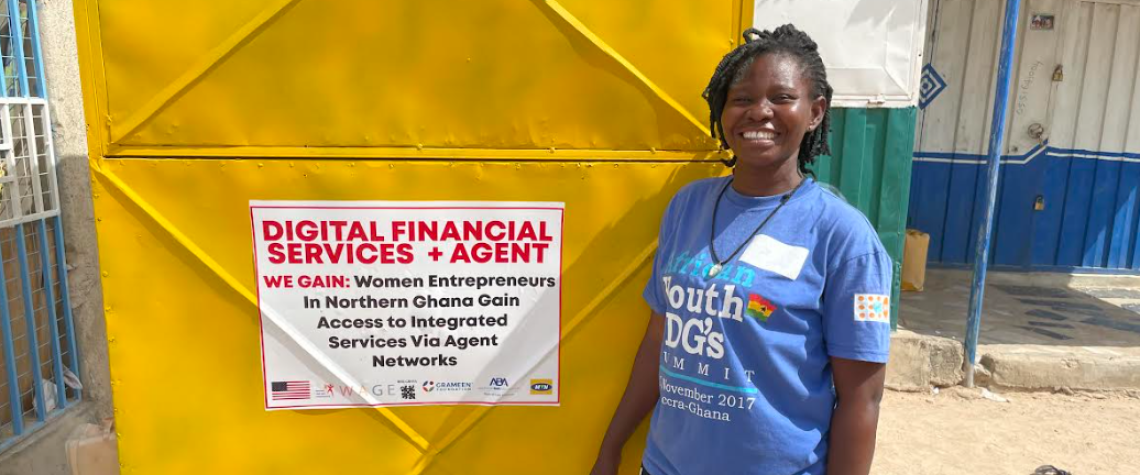Make your 2X MATCHED gift today!
This week only: Every $1 will be matched with $2 to enable women worldwide.
This week only: Every $1 will be matched with $2 to enable women worldwide.
Posted on 06/21/2024
In blogs 1, 2, 3, and 4 in this series on financial abuse, we announced Program SAFE, described the possible prevalence for financial abuse and some of Grameen’s early experiences studying financial abuse in Honduras, proposed practical steps financial service providers (FSPs) can take to address financial abuse, and described Grameen’s use of its Exploring Power Dynamics workshop as a critical starting point for addressing norms within financial service providers themselves.
For those of us supporting the social finance sector, gender-based violence (GBV) is not a typical training that management and frontline staff receive. However, Grameen has had several opportunities to integrate GBV programming into our typical economic development programming, with a strong focus on integrating GBV programming with FSPs over the past few years. In our last blog, we shared a lesson about the importance of addressing harmful gender norms among the frontline staff who are working with communities before assuming they could be effective change agents themselves. In Ghana, the frontline staff of our three partners were trained to train mobile money agents and their male partners or family members on how to provide information on GBV and local support services to their customers and other community members. Before getting to the crux of the training, they first had to understand how to safely address this topic.

Drawing on this experience and the lessons documented by experts in GBV programming and those with previous experience addressing financial abuse, the following principles should be considered when designing for the mitigation of financial abuse:
Client-Driven: The client (facing financial abuse) is the best judge of whether making any changes or engaging in any new practice promoted by an FSP might lead to further harm. An FSP should only take actions if it is safe to do so and if this is what the client wants.
Safety: Keeping clients safe should be a number one priority. In order to protect clients who have not yet shared with the FSP about any abuse they are experiencing, it may be important to assume every client/potential client is experiencing financial abuse in some form.
Responsibility and Accountability: The burden of safety should not fall solely on the client. Know how financial services can be misused by an abuser and take preventative actions. Be proactive and not reactive and assume your systems will be used to abuse another person.
Respect: Build empathy and awareness into policies and practices. Incidents of financial abuse can affect a client’s sense of security and trust in other people. Being genuine and honest can help rebuild trust and support recovery. The role of FSPs is to provide resources for problem-solving, such as clear information on the choices available to them.
Confidentiality: Policies and practices should default to the highest levels of privacy. Do not share any information without the client’s consent, even with family members who appear to innocently request basic information, such as a mailing address or mobile phone number (this is particularly concerning for survivors who may be hiding from an abuser). The threat of discrimination, social isolation and punishment is very real.
Non-Discrimination: All current and potential clients’ lives are valued. All sexes, gender identities, ages, religions, etc. are at risk of financial abuse. To offer support in a non- discriminatory way, we need to be aware of our own preferences or prejudices. (See blog 4 on how Grameen approaches this).
Operate Holistically: Consider the entire client service journey and the risks to financial abuse along the way. Stress-test systems, policies, and products to explore their susceptibility to being misused. Seek to prevent and manage the risks. Assume that clients are not aware of what financial abuse looks like or how it is experienced--even if they are experiencing it themselves.
Be Flexible: Be willing to work outside normal procedures, where possible. Have policies and protocols that define where flexibility is permitted.
While addressing financial abuse within the financial sector can appear to be daunting, there is quite a bit of experience among those who have worked on GBV to inform how we can safely do this. Seeking cross-sectoral collaborations with local GBV service providers is one way to build our confidence and ensure we’re consistent with these design principles.
In our next blog, we plan to share about how to pick up on the signs that someone is experiencing financial abuse.